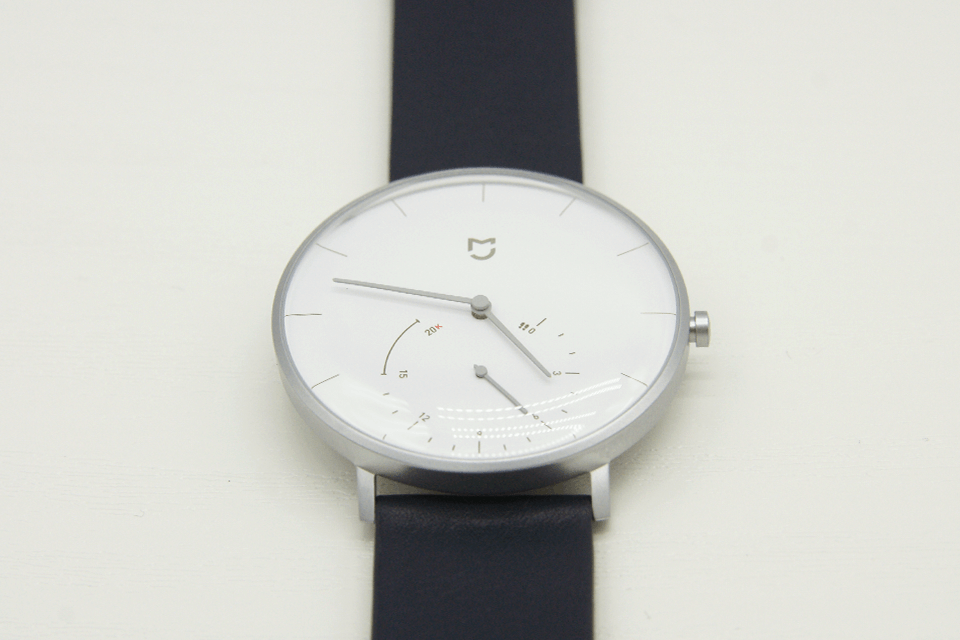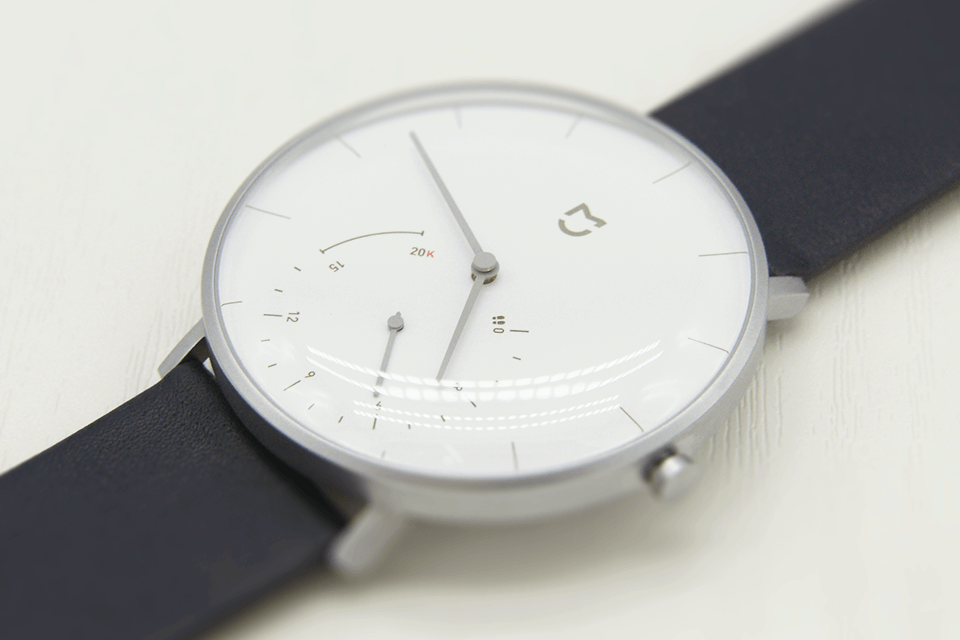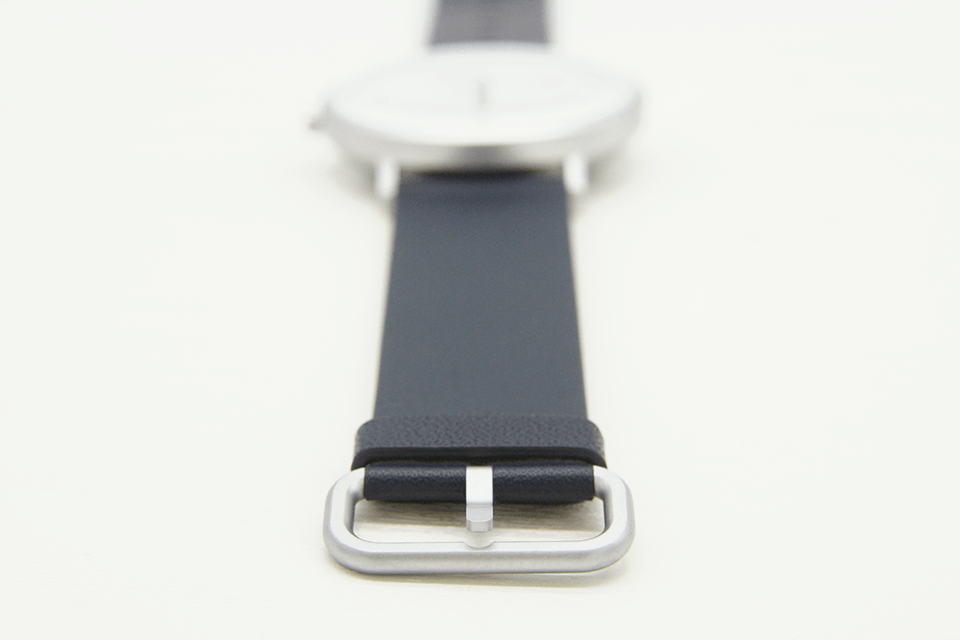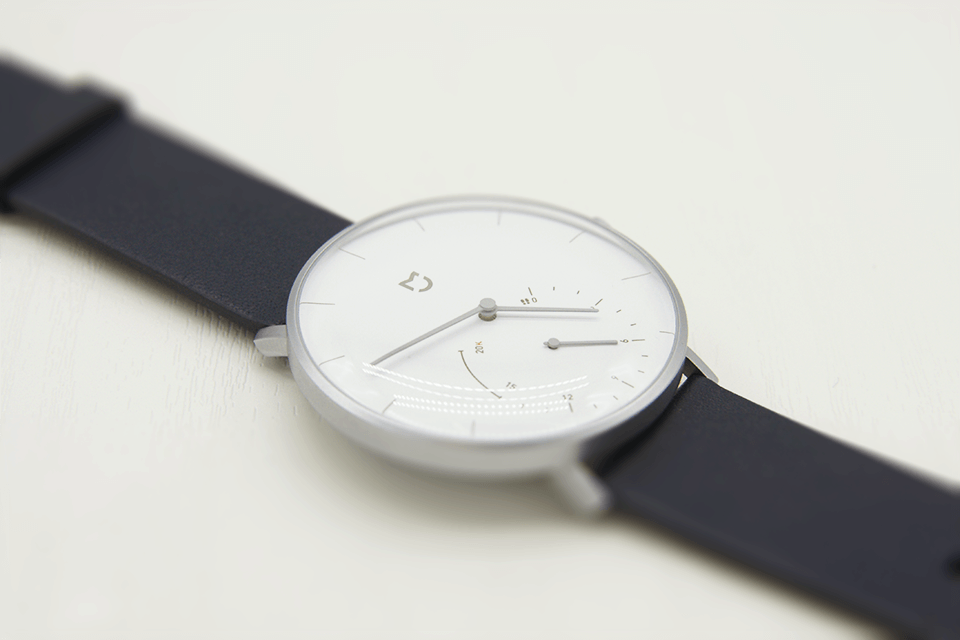Thoughts on Xiaomi
A couple of years ago, Xiaomi released the Mi band (smart band), which I received as a gift right after its release. The price was about 10,000 KRW, cheap enough just to buy it out of curiosity, but the material and design reminded of a keychain hanging on the wardrobe of a bathhouse. That's why I didn't want to wear the watch except when I was working out, but even that got too tiresome that I forgot about the watch at all. I just remembered that I ever had that band, as I was using the Mijia Quartz.

Features
As a Xiaomi product, the Mijia Quartz is inexpensive with a price tag of around 60,000 KRW and limited functions. The watch features a pedometer, calorie counter, alarm, mobile phone notifications, automatic time setting and that's about it. It's interesting that a small counter design is applied at six for the pedometer feature. Frankly speaking, since the most attractive feature of the watch appears to be the pedometer, the watch tries to appeal to those who want to count their steps properly. For a person like me who is not really into smart functions however, this is quite useful. I am not a big fan of changing and using complicated and different functions. It's better to have at least a pedometer that is easily visible.

The hardware
While looking at the details, I kept thinking that the Mijia Quartz is a 60,000 KRW worth analog watch. First of all, there was nothing to complain. On the contrary, the watch was actually quite outstanding. I couldn’t find any shortcomings even if the watch would cost 150,000 KRW. Xiaomi indeed did a great job.
All metal parts were sandblast-treated, which can make inexpensive watches look more high-end rather than sloppily polished surfaces. Xiaomi understood it well. One could think that the small crown-like button is too small, but I would compliment that it was a good choice considering the visible balance with the short and thin lug. Again, there is nothing to complain, as the functions are not controlled by rotating the crown and the button is to be pressed anyway.
The index design of the pedometer indicator that takes up the whole radius of the dial is clever and well visible. The MJ logo instead of Xiaomi’s mi logo is another element that makes the Mijia Quartz look more like a wristwatch. The dome-type back cover of the case goes well with the dome-type mineral glass at the front. It looks like a watch made by a Scandinavian brand.

The leather quality of the strap is average but with a very smart finishing. Such a level of edge coat finishing is not easy at all. Instead of using nubuck for the part that meets the skin, the same leather used for the outer cover is used. This costs more and also looks classy. It feels good too. It was also considerate of Xiaomi to make more holes for the buckle to adjust to the wrist size. More than that, it was impressive that a watch at this price level applied a spring bar so the strap can be detached just by pushing with the fingernail. I could even understand, if the strap itself costs 60,000 KRW. Probably Xiaomi didn't make the strap, but it is very lucky to have met such a supplier. Credit must be given to the one who chose the supplier and controlled quality. If I would be the CEO of Xiaomi, I would give a bonus and promotion to the employee who selected the strap supplier. In conclusion, the Mijia Quartz wins ten out of ten in terms of hardware, considering its price.

Lows
The alarm vibration is too weak. You could feel the vibration if you’re in a quiet place, but it’s highly likely that you won’t feel it if you’re having a drink at a bar, or walking around crowded tourist sites. The fundamental reason why a smartwatch has notification vibration is because it is easier to feel the alarm as the device directly adheres to the skin, rather than a mobile phone that is always inside the pocket. But you couldn’t feel that with the Mijia Quartz. But I still won’t complain considering its low price.
The most serious shortcoming is the bad Bluetooth connection with the mobile phone as well as inadequate support in Korean. Bluetooth functions easily get cut off and the reset button for the pedometer doesn’t work well too. I understand that the manual was only written in Chinese, but it’s very hard to find Korean even in the app. Some parts are in Korean, some in English and most of them in Chinese. If everything would be in English, it wouldn’t be hard to understand the functions, but to use the watch properly, you would have to look up the Chinese dictionary. Most of the parts are written in Chinese to the extent that you could have a decent reading fluency in Chinese when you are done understanding all menus perfectly. Maybe there is a button that will change all menus into Korean. As I couldn’t find it, there is the least chance that someone else will find it.



